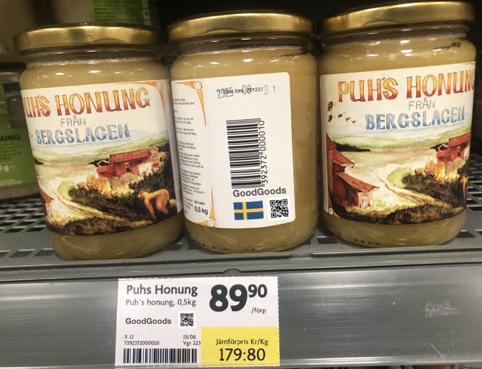Traceability and authenticity
Blockchain technology can offer several benefits to honey producers, particularly by increasing transparency and efficiency in the supply chain. Here are some potential benefits:

1. Supply chain transparency:
Traceability of origin: The blockchain makes it possible to create an immutable and transparent ledger that records every transaction and movement of honey from the producer to the final consumer. This ensures that the entire supply chain can be traced, providing insight into the origin and journey of the honey.
2. Quality assurance:
Immutable records: once data has been added to the blockchain, it cannot be changed. This feature ensures the integrity of records related to honey production, quality testing and certifications. Using data from AI-analyzed images, producers can demonstrate the authenticity and quality of their honey.
Recall: Defective batches can be limited to the exact batch, reducing damage and losses.
3. Fair compensation
Fraud prevention: Smart contracts: Self-executing contracts with the terms of the contract directly written into the code, can be used for automatic verification and enforcement of quality standards. This reduces the risk of fraudulent activities in the supply chain.
Decentralization: Blockchain eliminates the need for intermediaries, such as brokers or distributors, allowing producers to have a more direct relationship with buyers. This can potentially lead to fairer remuneration for producers as they can negotiate directly with buyers.
Increased value: The technology builds an increased value of the product compared to competing products that cannot show an objective documentation.
4. Certifications and compliance:
Automated compliance: smart contracts can be programmed to ensure compliance with industry standards and certifications. This reduces the administrative burden on producers and ensures they meet the necessary legal requirements.
5. Efficient transactions:
Reduced paperwork: Blockchain can streamline documentation processes and reduce the need for administration. Faster and more efficient transactions between producers, distributors and retailers.
6. Market access:
Global reach: The blockchain facilitates cross-border transactions and can help honey producers access international markets more easily. The transparent and secure nature of the blockchain can build trust with consumers in different parts of the world.
7. Consumer confidence:
Transparent information: by giving consumers access to detailed information about the honey they buy, such as its origin, production methods and quality test results, the blockchain can increase consumer confidence in the product.
CO2 Carbon footprint: Calculations can be carried out jointly in the block/value chain with significantly higher accuracy, instead of as today with many separate smaller measurements.
8. Data from AI
The ”Know Your Honey” project: provides a revolutionary opportunity to use the project’s patent-pending technology to use data from image analysis with AI to verify the raw material at the time of harvest. Data that objectively documents the time, place, quantity and quality of the harvest.
Summary:
Benefits: By using a blockchain, a supply chain can become more standardized, lean, transparent, quality assured and secure. For example, at every step of the process, bar or QR codes would be scanned and recorded on a blockchain, meaning that a product can be tracked at every stage from producer to customer. The product would be visible in real time, at all stages, to all authorized parties and the data and information is immutable. A modern supply chain offers higher transparency, better efficiency, less fraud and more importantly, a safer and more reliable service for all involved and increased value.
Conditions: Despite the obvious security benefits of blockchain, the technical solutions must of course follow good practices and regulations to address issues of key management, smart contracts, privacy, system architecture, security, governance and consensus.
Conclusion: The blockchain technology implementations that will survive are those that represent the so-called ”smallest viable ecosystem”. That is, the smallest turnover of the technology at the lowest cost but still generating short-term values and profits for the participating actors, without being dependent on the participation of all actors in the chain.

